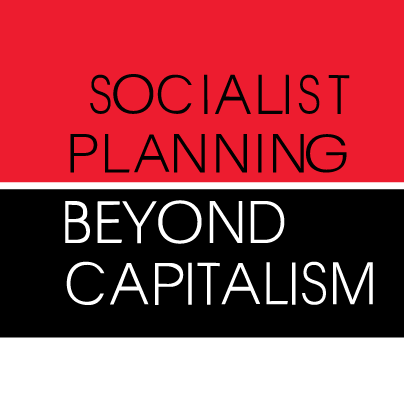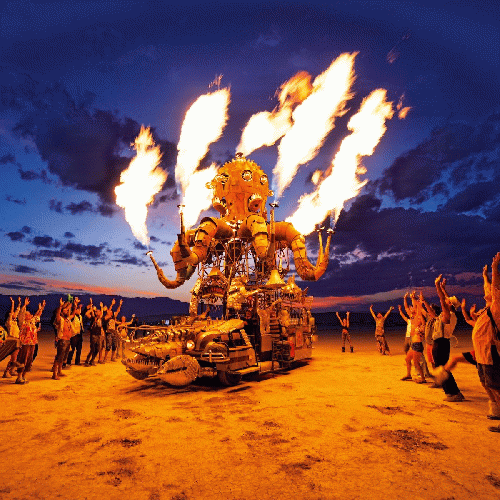Neopagans have a great deal to teach 21st Century socialist, if only we would listen. As capitalism has gone into deep decline in the United States and England beginning in the 1970s, two spiritual movements have sprung up outside Judeo-Christianity: The New Age and Neopaganism. Contrary to some sociologists' claims that Neopagan Wiccans, Druids and Ceremonial Magicians are not part of the New Age, I argue that there are at least 27 differences between the two. I claim that these differences could be the basis of an alliance between Neopagans and 21st Century socialists.
ORIENTATION
Beginning in the late 1970s, Yankeedom became increasingly conservative as the standard of living declined. The white working-class flocked to the more conservative fundamentalist churches where they were told to vote for a conservative in the 1980 elections. But what happened to the middle and upper middle-classes? They also experienced an economic decline. For some, their strategy was to reject organized religion, and build two alternative spiritualities: the New Age on the one hand, and Neo-Paganism on the other. This article compares and contrasts them to each to each other.
I begin the article with the economic conditions of Yankeedom between 1948 to about 1978. I then provide working definitions of each movement, when they started and who their major contributors were. I then compare and contrast the New Age and Neopaganism in depth. I begin with what they have in common, but I spend most of the article contrasting their differences across 27 categories including the importance of the past and future; attitude towards Christianity; the methods of achieving altered states of consciousness; importance of the paranormal and attitude and stance towards authority. As a materialist, my concern is also with New Age and Neopaganism' place on the political spectrum and their attitudes towards capitalism. Lastly, I examine their class composition and their stance on feminism. I close Part I of this article by asking questions about how relevant both movements might be to 21st century socialism. In Part II of this article, I answer the questions I've raised.
My sources for this article are The Emerging Network: A Sociology of the New Age and Neo-Pagan Movements by Michael York, The New Age Movementby Paul Heelas, Drawing Down the Moon by Margot Adler, and The Aquarian Conspiracyby Marilyn Ferguson . I will also draw on my personal experience, having lived in and around both of these movements in the San Francisco Bay Area (jokingly referred to as the Neopagan capital of the world) between the ages of 30-50 during 1970- 1990. I also witnessed the start of the Burning Man phenomenon, which some say is the essence of the New Age.
Yankeedom Economic Roller Coasters 1950-1990
Marxian economists agree that between the end of World War II and about 1971 were the golden years of capitalism, at least in Yankeedom. Germany and Japan were decimated by the World War II and offered no competition to Yankee capitalists. The white working-class never had it better. Unions were stronger than ever (about one worker in three was in a union). The GI bill allowed these workers to buy cheap homes in the newly built suburbs and go to college tuition-free if they wanted. The Yankee rulers were so wealthy that they were taxed up to 90% of their earnings and they still made great profits. A working-class family lived comfortably on one income and the job, on average, was 40 hours a week. Under these abundant conditions, it is no accident that there were no New Age or Neopagan movements because movements are more likely to emerge when economic, political or ecological conditions are difficult.
Economically, things began heading south in the early 1970s. Germany and Japan had recovered from the war and were beginning to compete with Yankee capitalists. One response from the Yankee rulers, rather than competing directly with these two nations, was to rip off more surplus value from workers. Yankee capitalists uprooted manufacturing jobs and set up factories in what were then called "Third World" countries where land and labor were cheaper. These were called "runaway shops". This meant the end of well-paying manufacturing jobs for workers. Unions were not strong enough to stop this. No retraining was provided by the state, as workers had to scramble to find semi-skilled or unskilled jobs. The second way Yankee capitalists squeezed surplus value out of workers was to increase the number of hours workers labored during the week and the number of hours worked each day. By the 1980s, the average work week had risen from 40 to 50 hours per week and working-class and middle-class households required two incomes. Workers struggled with insecure jobs and the unions were unable to protect workers' health-care benefits. Workers began to lose confidence in unions and union membership declined.
A third major decision the ruling-class made was to invest their money in financial capital rather than industrial capital. In 1971 the rulers decided to go off the gold standard as the reserve currency and the dollar had no gold backing. Capital could be exchanged by bankers without needing gold to back it up. In addition, the United States had lost in Vietnam and the oil embargo by the OPEC countries sent a shiver down the spines of the Rockefellers. The Rockefeller sponsored Club of Rome project told the Yankee population that population pressure was a real problem and people needed to live on less. Yankeedom was in economic decline. By the late 1970s Jimmy Carter was telling its population that we needed to learn to do with less.
All this is not the kind of news the Yankee population expected to hear. Increasingly, politicians were distrusted while the mainstream religions were seen by both middle-class and upper middle-class sectors of the population as part of the problem. It is in these declining conditions that the Neopagan and the New Age movements should be understood. Both alternatives were optimist spiritual reactions to a depressed state of the political economy and mainstream religion.
What Does the New Age and Neopaganism Have in Common?
Before we define the New Age and Neopaganism, let's begin by what they have in common. Though the seeds of these movements are difficult to pin down, the time of their clear presence was remarkably similar. Neopaganism "arrived" in 1979 with the simultaneous publishing of two books: Starhawk's The Spiral Dance and Margot Alder's book Drawing Down the Moon. For the New Age, the founding text, the Aquarian Conspiracy by Marilyn Ferguson was published in 1980.
Both movements were strongly motivated by a rejection of mainstream Judeo-Christian religion. Both movements believed in the power of personal experience, whether magical or mystical, as opposed to trusting religious authorities, whether they be priests or rabbis. Each believed that every individual had a "higher self" that superseded the ego. The experience of novices of both Neopagan and New Age movements when they first find out about the movements is mostly described as a "homecoming". There are no reports of conversion. Both agree that evil not an objective force (as in the form of a devil). Rather, each think that evil has either a psychological or social origin. Neither intends to grow bigger, as there are no Neopagan or New Age missionaries. Each is life-affirming and optimistic rather than life-denying and pessimistic.
Next Page 1 | 2 | 3 | 4 | 5 | 6
(Note: You can view every article as one long page if you sign up as an Advocate Member, or higher).






